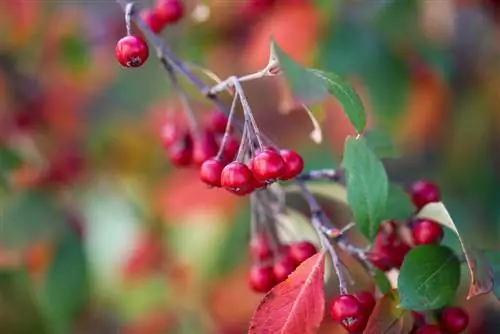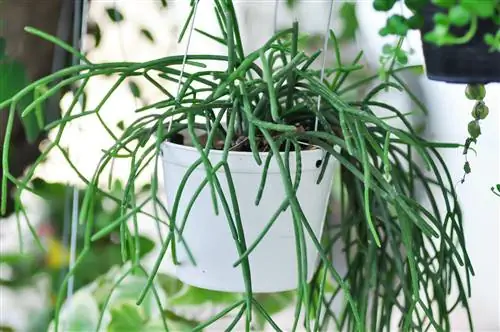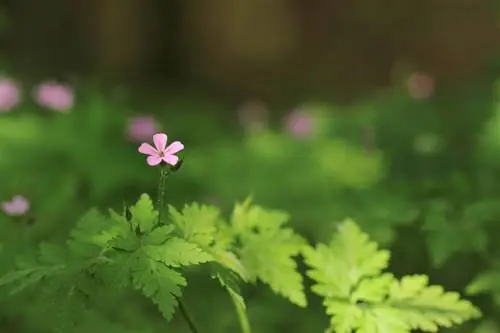- Author admin [email protected].
- Public 2023-12-25 17:45.
- Last modified 2025-01-23 11:22.
Black chokeberries, also known as black aronia berries, are recommended to us as a he althy superfood. But there are still red specimens that no one wants to say a word about. Are they poisonous? If so, what risks do they pose?

Are red chokeberries poisonous?
Red chokeberries (Aronia arbutifolia) are not poisonous, but are inedible raw. They contain hydrogen cyanide, but in small, harmless amounts. Heating further reduces the concentration of toxins. The shrub is also a valuable pasture for bees.
Is the red chokeberry poisonous?
No, not really. Red chokeberries, scientifically Aronia arbutifolia, are edible raw in moderation, but simplyinedibleThat's why it's understandable that they are neither mentioned in recipes nor are their he althy ingredients in demand. The red chokeberry is also called felty chokeberry because the undersides of its leaves are felty. It is also nicknamed dwarf rowanberry because its berries are reminiscent of rowanberries, which are also falsely said to be poisonous.
Why is there a warning about hydrogen cyanide in chokeberries?
Prussic acid is a toxic substance for humansWarnings are quickly issued. In fact, it is better to react cautiously until the harmlessness of concentration has been proven beyond doubt. It is true that all Aronia varieties, both black and red, contain the substance amygdalin, which is converted into hydrogen cyanide in the body. But many other vegetables and fruits that we regularly consume also contain it, even in higher concentrations.
How dangerous is the consumption of aronia berries for humans?
In practice, little. Science has taken a closer look at the topic of hydrogen cyanide and has now been able to confirm the following points in studies:
- The substance of concern is mainly contained in kernels
- the concentration is around 1.2 mg per 100 g of fruit
- the critical intake level is 0.3 mg per kilogram of body weight
- raw berries are safe in small quantities
- Heating significantly reduces the concentration of toxins
Consuming them is by no means questionable, and is even recommended for the edible black chokeberries. Studies also confirm how he althy Aronia is.
Should the red chokeberry be better removed from the garden?
The flowers of the red chokeberry attract bees, bumblebees and other insects in May. Therefore, this shrub, which comes from North America, isa valuable pasture for bees Since no one is likely to eat much of the inedible fruits, they do not pose a major threat in practice.
Tip
Do not confuse with the poisonous red honeysuckle
Would you like to find out for yourself how inedible the red chokeberry really is? Then make sure that you are really dealing with the felty chokeberry. There is a risk of confusion with the poisonous fruits of the red honeysuckle.






